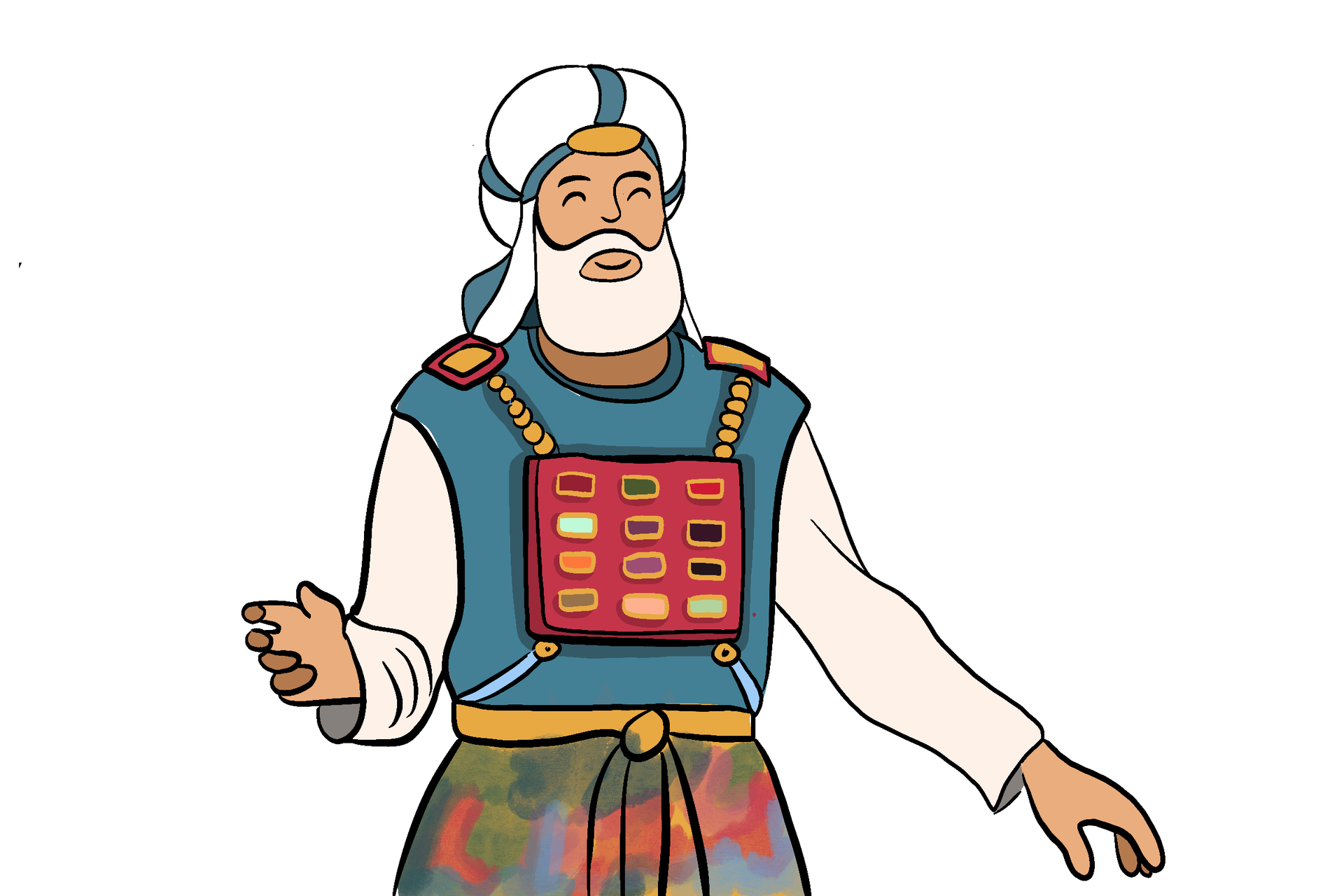Today’s daf starts an extended discussion of the high priest’s tzitz, or frontplate. According to God’s instructions in Exodus:
You shall make a frontlet of pure gold and engrave on it the seal inscription: ‘Holy to the Lord.’ Suspend it on a cord of blue, so that it may remain on the headdress; it shall remain on the front of the headdress. (Exodus 28:36)

Picture an engraved crown or headband, worn low on the forehead. But why does the high priest wear this item? Again, according to Exodus:
It shall be on Aaron’s forehead, that Aaron may take away any sin arising from the holy things that the Israelites consecrate, from any of their sacred donations; it shall be on his forehead at all times, to win acceptance for them before the Lord. (Exodus 28: 36-38).

Help us keep Jewish knowledge accessible to millions of people around the world.
Your donation to My Jewish Learning fuels endless journeys of Jewish discovery. With your help, My Jewish Learning can continue to provide nonstop opportunities for learning, connection and growth.
According to God’s instructions in Exodus, the tzitz works to help the high priest remove sin related to the people’s gifts to God, and to facilitate God’s acceptance of the people.
For some time now, the Talmud has been discussing sacrificial errors and their remedies — often in the form of a sin offering. On today’s daf, the rabbis try to figure out which specific errors the tzitz will erase. Does it only work for some types of sacrifices? Specific animal parts? And does the high priest actually have to be wearing it for it to work? Let’s focus on this last question.
The instructions in Exodus make it sound like the priest must be wearing the tzitz in order to effect removal of sin and win God’s acceptance for the people. But the Gemara quotes a fascinating beraita (early rabbinic teaching):
The tzitz of the High Priest, whether it is on his forehead or whether it is not on his forehead, appeases — this is the statement of Rabbi Shimon.
Rabbi Yehuda says: When it is still on his forehead it appeases, but when it is no longer on his forehead it does not appease.
Rabbi Yehuda’s position makes sense given a close reading of the biblical verses, but what is Rabbi Shimon thinking? He goes on to explain:
The halakhah with regard to the High Priest on Yom Kippur shall prove it, as the tzitz is not on his forehead, and it nonetheless appeases.
On Yom Kippur, the High Priest changes into white garments for part of the service and leaves the tzitz off — and Yom Kippur is all about atoning for sin and appeasing God! So surely the tzitz can be effective even when it is not worn.
Both rabbis have thoughtful positions with convincing rationales, but the Gemara doesn’t resolve the dispute. We are left uncertain — does the priest have to be wearing the tzitz in order to overcome ritual impurity and draw Israel closer to God? This question is particularly intriguing given that, by the time of the Gemara, the Temple had been destroyed for hundreds of years, and the priestly garments lost, looted or destroyed. Might Rabbi Shimon’s position open up the possibility that the tzitz is still out there, working to appease God, even without a high priest to wear it?
Interestingly, the later rabbinic commentators foreclose this possibility. Maimonides states this explicitly: “the tzitz only appeases when it is on the forehead [of the high priest].” (Mishneh Torah, Hilchot Bi’at HaMikdash, 4:8) In a world without a Temple and a high priest, if we want to renew our relationship with God, we have to do that ourselves.
Read all of Pesachim 77 on Sefaria.
This piece originally appeared in a My Jewish Learning Daf Yomi email newsletter sent on February 6th 2021. If you are interested in receiving the newsletter, sign up here.



